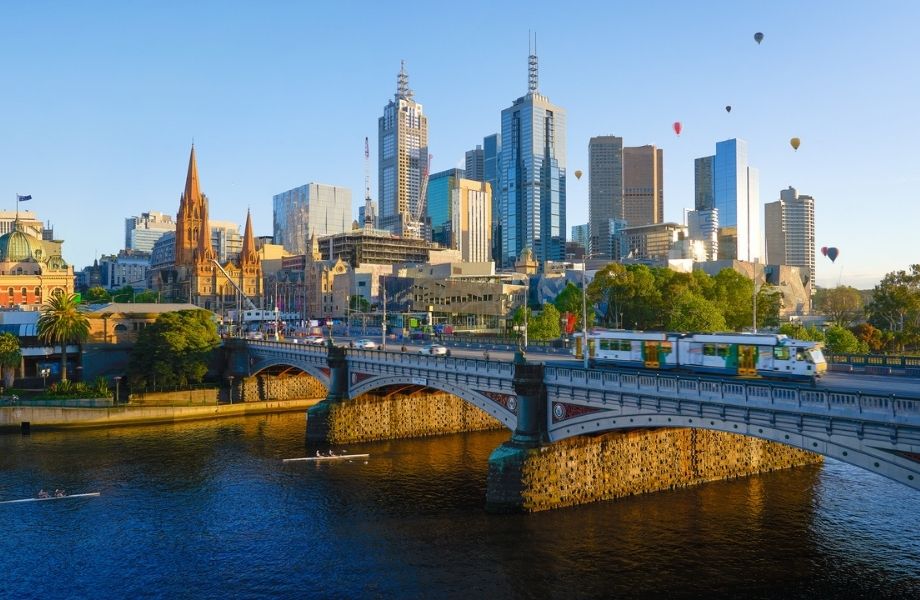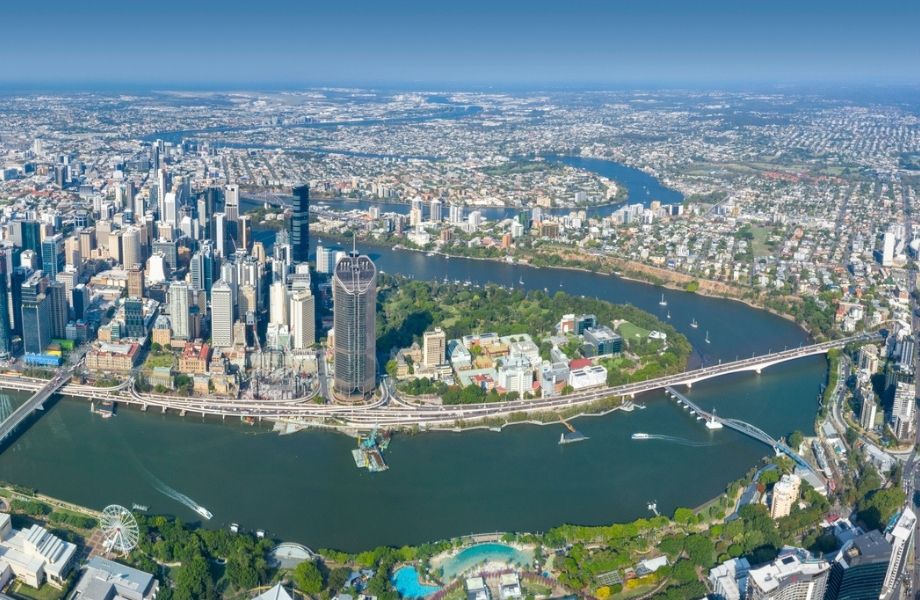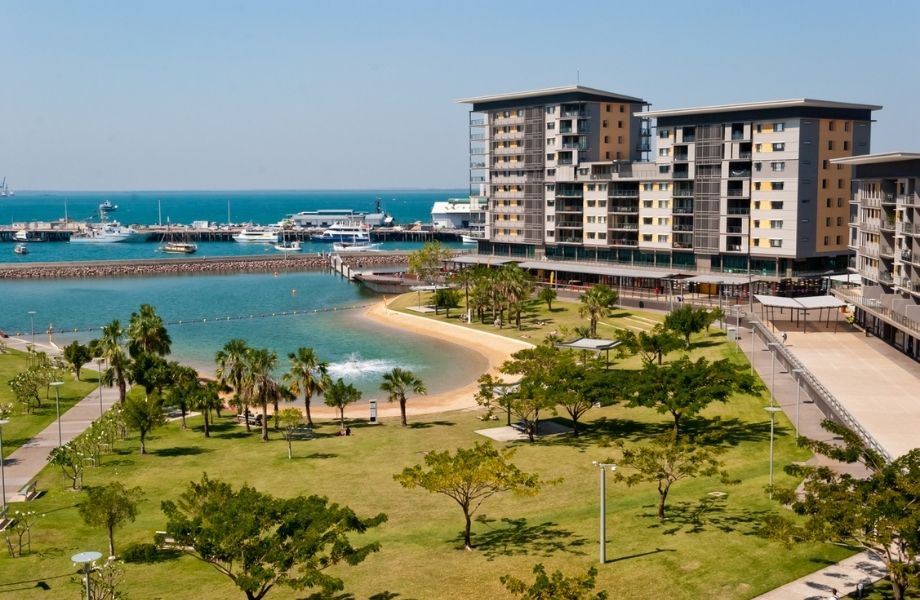How Current Housing Value Highs Stack Up
Low mortgage rates, a swift economic recovery—which has spurred consumer sentiment—and low listing volumes have catapulted national housing values to record highs.
At the end of March, the Corelogic national home value index increased a further 2.8 per cent, placing values 5.6 per cent above the previous market peak in October, 2017.
The combined value of Australian dwellings hit $7.9 trillion during the month, according to Corelogic.
This cements residential property as an extremely large and important asset class.
Comparing current capital city values with previous peaks adds some perspective to the current upswing, particularly in Perth and Darwin, where values remain substantially below their record highs from 2014.
It also highlights the different dynamics across capital cities, such as in the ACT, where dwelling values have hit a new high every month for 19 months.
Sydney
Sydney house and unit values took 44 months to reach a new high value.
While values have lifted a relatively high 8.1 per cent since the Covid-induced decline (which bottomed out in September, 2020), the total value of the dwelling market is actually only 2.6 per cent higher than the previous peak, which was in July, 2017.
In 2017, a property price downturn was likely catalysed by changes to lending conditions.
Cash rate reductions, along with a relaxation in borrower serviceability assessment rules, spurred the start of a recovery trend through 2019.
Covid-19 interrupted this upswing, but a recovery in economic conditions, and increased consumer confidence, has pushed values above the previous peak.

Melbourne
Melbourne values reached a peak in March, 2020 after staging a recovery from the earlier 11.1 per cent drop in values between late 2017 and mid-2019.
The Melbourne housing market was the most affected of any capital city by Covid-19, due to extended social distancing restrictions through 2020 and a high exposure to overseas migration as a source of housing demand.
Closed borders created a negative shock, with a more significant and direct impact on inner city rental demand.
Since bottoming out in October, 2020, as stage 4 lockdowns began to ease, Melbourne dwelling values have climbed 0.7 per cent above the pre-Covid high.
As the value of Melbourne housing nudges above its previous peak, it is worth noting the market has not recovered evenly.
House values remain -1.8 per cent below the previous November, 2017 high due to a larger correction through the recent downturns. Within different price segments, there is also variation.
As of March, the “high” end of the market (measured as the top 25 per cent of values in Melbourne) was still -4.0 per cent below its record high, which was in October, 2017.
Meanwhile, low- and middle-tier values have increased beyond their pre-Covid highs by 4.9 per cent and 2.2 per cent respectively, reflecting a smaller decline turn recent downturns, as well as strong demand from first home buyers who typically target properties around the middle-to-lower end of the market.

Brisbane
Brisbane house and unit values are 6.5 per cent above the previous peak, which was in April, 2020.
Market values saw a peak-to-trough decline of -0.9 per cent through Covid-19.
The decline lasted just four months when Brisbane dwelling values recovered to a new high by October, 2020.
As with Melbourne, the recovery in the Brisbane market has been varied.
While house values climbed 7.6 per cent above the previous peak through March, which was reached in May, 2020, unit values remain -9.4 per cent below the record high value, which was in March, 2010.
Brisbane unit values are currently at similar levels to October, 2007, reflecting an affordable entry point to the market.
The weaker conditions across the unit sector are likely due to previously high levels of unit completions keeping values subdued, particularly in the later part of the 2010s.
ABS dwelling completion data saw unit completions across Queensland rise 50.4 per cent in the five years to September, 2020, compared to a 17.4 per cent lift in house completions. However, strong internal migration flows to south-east Queensland, as well as other tailwinds for housing demand more broadly, has supported five consecutive months of growth in Brisbane unit values since November, 2020.
Adelaide
The Adelaide market was one of the least affected through Covid-19 in terms of values.
Following a -0.2 per cent dip from the previous high in May, 2020, values had surpassed the previous peak by September last year.
The rate of change in dwelling values jumped to a monthly increase of 1.5 per cent during March, 2021, which is the highest monthly growth rate seen across the city since December, 2007.
House and unit values in Adelaide are currently sitting at a record high.
Although housing values are reaching new highs each month, relative to the larger capital cities, Adelaide housing values remain low.

Perth
The Corelogic home value index for Perth shows values -15.9 per cent below the record high, which was in June, 2014.
The peak-to-trough decline, which was induced by the rapid withdrawal of mining investment, employment opportunity and migration, created an additional negative shock, which pushed values down a further -2.2 per cent between April and July, 2020.
However, the Perth dwelling market has seen consecutive increases in value for the past eight months.
For the past five months, value increases have exceeded 1 per cent a month, which is a strong growth rate and signals the start of what may be a sustained and rapid recovery. This co-incides with rising interstate migration levels to Western Australia and projected increases in already rising mining investment.
Hobart
Hobart has seen the second-highest lift in housing values from the previous peak, at 12.3 per cent.
That previous peak was in February, 2020, before a brief Covid-induced decline in total dwelling values of just -0.3 per cent.
Hobart values have seen extraordinarily strong growth with the annualised capital growth return sitting at 9.4 per cent for a five-year period (+56.3% during the past five years).
ABS building activity data suggests house commencements were 32.8 per cent above the decade average through the September, 2020 quarter in Tasmania.
Combined with affordability constraints, additional stock should work to ease growth rates across the region in the coming months.

Darwin
Darwin values are the furthest from the previous peak of the capital city markets.
A record high was reached across Darwin houses and units in May, 2014.
Similar to Perth, a decline in the resources-related infrastructure sector saw a substantial decline in housing values, with the peak-to-trough fall extending to February 2020, at -32.7 per cent.
Since February, 2020 however, Darwin values have increased 16.5 per cent through to March, 2021, which is the fastest growth rate among the capitals.
This leaves values -21.6 per cent below the record high, and shows the Darwin dwelling market firmly in a recovery trend.
ACT
ACT values at the end of March were 16.9 per cent higher than the previous peak, which was in April 2019.
Following a -1.5% peak-to-trough decline, ACT dwelling values had recovered by September, 2019, and have hit a new record each month since.
Rapid dwelling value growth across the capital has largely been driven by house values, which are 19.7 per cent above the previous high in April, 2019, compared to a 7.2 per cent lift in unit values since the previous high.
Part of the strength in ACT value returns has been due to relatively high incomes across the territory, as well as resilient labour market performance through Covid-19.
However, the fact that values have surged almost 17 per cent in less than two years highlights an increasing barrier to ownership for future first home buyers.














